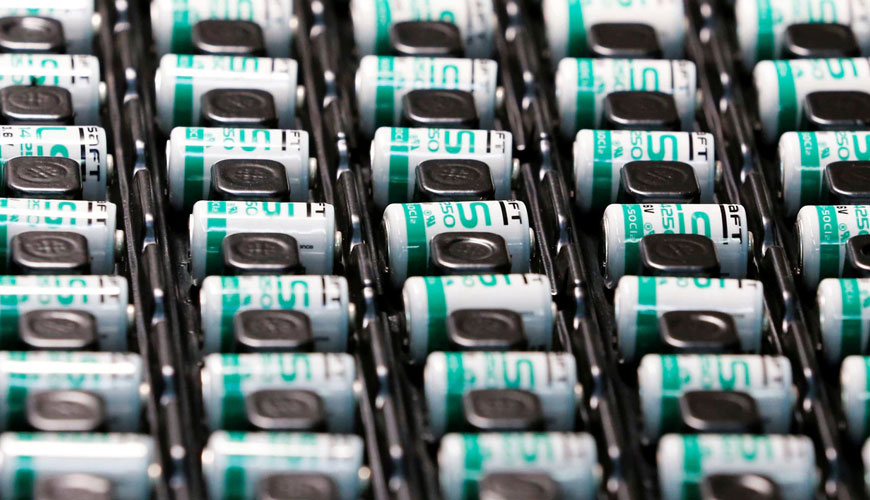

UN/DOT 38.3 details environmental, mechanical and electrical requirements for all lithium cells and batteries. Lithium battery manufacturers and products using lithium batteries must demonstrate conformity in the design, manufacture, and distribution of their products.

Lithium batteries are classified as hazardous materials and can pose a safety risk if not tested and packaged in accordance with shipping regulations. UN/DOT 38.3 testing helps ensure the safety of lithium-ion or lithium-metal batteries during shipping.
The transport of lithium batteries is detailed by the United States DOT (Department of Transportation), which defines shipping regulations for the United States under the UN Manual of Tests and Criteria, Subpart 38.3 (UN 38.3, UN International Air Transport Association (IATA) and 49 CFR, Part 100 – 185. subject to national and international regulations.
The UN/DOT 38.3 test requirements applicable to the carriage of lithium batteries are divided into eight:
Altitude Simulation (Primary and Secondary Cells and Batteries)
Low pressure test simulating an unpressurized aircraft cargo area at 15.000 meters altitude, after storing batteries for 11,6 hours at 6kPa, the criteria for loss of mass, leakage, venting, disassembly, rupture or fire and voltage within 10% of pre-test voltage must be met.
Thermal Test (Primary and Secondary Cells and Batteries)
This test covers changes in temperature extremes from -40C to +75C. Batteries are stored for 40 hours at -6C (12 hours for large cells/batteries), then 75 hours at +6C (12 hours for large cells/batteries), for a total of 10 cycles.
Vibration (Primary and Secondary Cells and Batteries)
This test simulates vibration during transport. The test is a Sine Sweep: 15Hz – 7Hz – 200Hz in 7 Minutes; 12 Sweeps (3 hours); It is completed as 3 mutually perpendicular axes.
Shock (Primary and Secondary Cells and Batteries)
This test simulates vibration during transport. The test is half sine pulse: 150G/6ms for small cells / batteries; 50G/11ms for large cells/batteries; 3 pulses per direction; It is completed as 6 directions (+/-z, +/-x, +/-y).
External Short Circuit (Primary and Secondary Cells and Batteries)
This test simulates an external short to the terminals of the cell or battery. At +55C, apply short circuit (<0,1ohm) between terminals. Maintain at least one hour after sample temperature returns to +55 +/-2°C. The transition criteria are: The case temperature does not exceed +170 °C and there is no disassembly, rupture or fire within 6 hours after the test. Activation of fuse, current limiting circuit and ventilation mechanism is allowed.
Impact (Primary and Secondary Cells)
This test is valid for primary and secondary cells only. Cylindrical cells >20mm in diameter, simulating influence on cell state.
Overcharge (Secondary Batteries)
This test is for secondary or rechargeable batteries only. Simulates an overcharge condition on a rechargeable battery: 24 times the manufacturer's recommended charging current for 2 hours. The battery will then be monitored for 7 days for fire or disassembly.
Forced Discharge (Primary and Secondary Cells)
This test simulates a forced discharge condition for primary and secondary cells only.
EUROLAB, with its state-of-the-art accredited laboratories and expert team, helps you get precise and fast results within the scope of UN/DOT 38.3 testing.
To get an appointment, to get more detailed information or to request an evaluation, you can ask us to fill in our form and reach you.